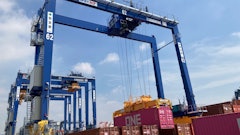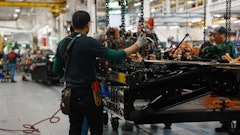
While studies suggest that the overall construction industry is increasingly digitized, small site contractors—a segment that makes up a majority of the market—remains largely unchanged. Many still rely on conventional means and methods to complete day-to-day jobs.
The reasons for the lack of investment in modern advances are multifold. Fear of change, the perceived high cost of entry and the inability to easily quantify productivity gains and cost savings are among the top reasons most commonly cited. In some cases, contractors may be intimidated or overwhelmed by the learning curve of new software and systems and unsure about managing the data needed to use technologies effectively.
But those fears pale in comparison to the need for better workflows and improved productivity, particularly in light of the continuing workforce challenges. Improved processes can only be accomplished with technology—and some might be surprised to find that options are available and affordable, especially for small site contractors.
What’s at Stake
For many small site contractors, investing in a GNSS base station and rover is one of the quickest and most cost effective ways to dive into technology-enabled workflows. They are highly versatile, typically mounted on poles, machines or a semi-permanent location on a jobsite. These systems empower field crews, eliminating the need for in-ground stakes, minimizing the need for surveyors on site and are instrumental in measuring stockpiles and topsoil piles.
The next step might be grade control, a capability that has been available in the industry for better than two decades. The common perception is that these solutions are very expensive and single-machine focused. However, grade control solutions are readily available at a relatively low cost—and some of these systems don’t require mounting hardware, making them easy to move from machine to machine, and are iOS and Android compatible.
LK & Sons Excavating LLC in Laura, Ohio is a small contractor with a big business in constructing parking lots, driveways and building pads. While fascinated by technology, particularly machine control, the owner didn’t believe his company had enough work to make the investment in big machine control systems, which usually require base stations and other connected technologies. Instead, he invested in a simplified 2D grade control platform. Now, what used to require two people and two pieces of equipment—a roller and skid steer—is completed with one and the operator no longer has to jump out of the cab to check grade. Jobs are safer and more efficient - at least 50% more efficient when it comes to labor. Having digital profiles that are saved across machine setups is an added bonus.
Once that works, the next step might be a system that offers both layout and machine guidance. New England-based New Era Excavation, a small site excavation residential and light commercial company serving New Hampshire and Northern Massachusetts, began with base stations and rovers and has gradually expanded its technology portfolio over the years.
Early on, the operators used 2D grading systems and then began testing full 3D systems. When a 3D machine guidance solution purpose-built for small site and utility contractors was introduced, co-owner Tom Gardocki was first in line to evaluate. With this one system, operators can perform a range of common activities, including site surveys, 3D machine guidance, in-field design and reporting. The system is modular, so the GNSS smart antenna can go from a pole for surveying and to an excavator stick while the data collector moves from rover pole to a mount in the machine cab. Gardocki has stated that this single system saves labor, improves accuracy, especially when pulling tape on uneven terrain, and is safer because nobody is standing near heavy equipment. He can get more jobs done by the same number of people in the course of a year since investing in this single system.
Reducing the Upfront Stress
One of the common reasons that small contractors cite for not investing in technology is the large upfront investment. Today, there are even ways to minimize that challenge through subscription models.
We are all familiar with software-as-a-service models for office solutions. Today, somewhat similar models are emerging for on- and off-machine construction solutions. These subscription models let contractors upgrade to the latest hardware and software from on-machine grade control systems to off-machine base stations, data collectors and rovers. Some include a full factory warranty and repair or replacement of accidentally damaged hardware, as well as field-to-office software to simplify data management.
The advantages of these models for small site contractors and owner operators are many. Arguably, the biggest benefit of a subscription model is the limited upfront capital investment. Others include cost predictability, flexibility to scale and assurance that a technology investment stays current and beneficial.
As an example, Stutsman-Gerbaz, an earthwork and demolition contractor based in the Roaring Fork Valley of Colorado, realized the value of 3D grade control to improve productivity, at first only on a limited basis. Through a technology subscription, the company now has most of its dozers and excavators equipped with the latest version of technology. Not only can the company better afford the 3D machine control technology, but through the subscription, the sensors, harnesses and cables along with software upgrades on desktops, rovers and tablets are included and handled through the local dealer.
For many small contractors, on- and off-machine subscriptions could be the best possible way to get a foot in the door of advanced construction technology.
Realizing ROI
With the growing number of options for small site contractors to invest in technology, the decision about where to begin can be another significant hurdle. The effort to improve operational workflows while staying competitive can feel like a sinking ship with multiple leaks. Many don’t know which hole to plug first or how to address issues effectively. Due to the bespoke nature of construction projects, there is no single solution that fits every business.
One of the most effective ways to realize the value of technology investment very quickly is to focus on process improvement—not point solutions. Consider solutions that are part of a larger ecosystem to ensure continued support and growth as your needs change. Identify your most inefficient workflow and find a technology solution that addresses that problem.
Also, reach out to local dealers to demo solutions firsthand and receive hands-on training. Before investing in a solution, ask about flexibility in consuming existing data formats like PDFs to integrate solutions into your current workflow.
The custom nature of the construction business also highlights the importance of relationships with solution providers and local dealers to help evaluate specific inefficiencies and recommend targeted first steps to see ROI quickly. Demonstrating real-world impacts is important to overcoming uncertainty and empowering contractors to make informed investment decisions.
As well, construction is and always will be a relationship business. Talk to other contractors who are using technology and learn from their experiences.
By leveraging the ecosystem approach, subscription models, and hands-on demonstrations from local dealers, small site contractors can more easily evaluate options and justify the ROI of adopting new technologies to overcome their most pressing inefficiencies. Embracing proven solutions aligned with existing methods can empower smaller businesses to stay on the cutting edge of an increasingly technology-driven industry—driving productivity, improving competitiveness and introducing an expanded ecosystem of opportunities.



























